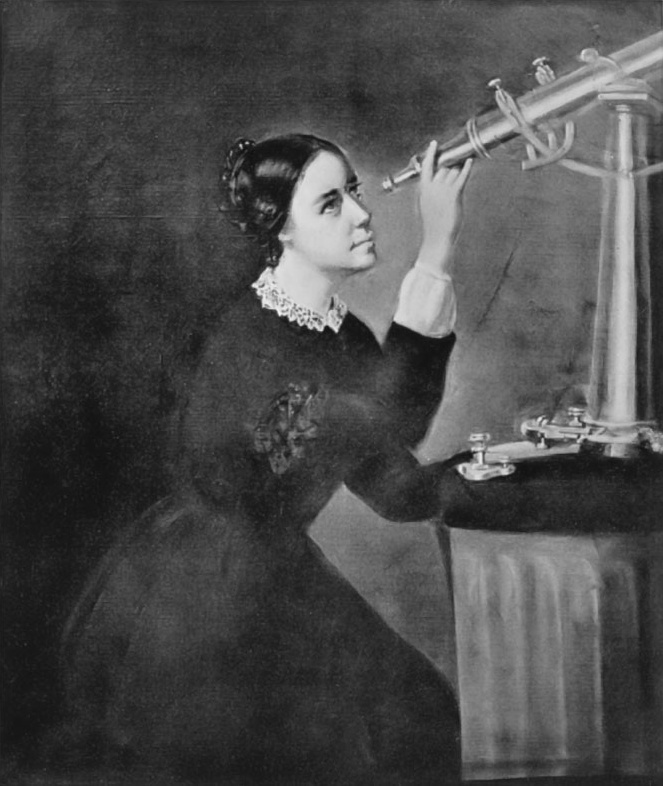Maria Mitchell

Credit: Public Domain
Occupation: Astronomer, Educator, Librarian
Year born: 1818
Research Areas: Comets, Solar Eclipse, Planets, Double Stars, Nebulae
"We especially need imagination in science. It is not all mathematics, nor all logic, but it is somewhat beauty and poetry."
Source: Maria Mitchell: Life, Letters, and Journals (1896), Phebe Mitchell Kendall (ed.),
Early Life
Maria was born in Nantucket, USA. Her family made sure that all 10 of their children were well-educated, the girls and the boys. Maria also read about lots of topics in the local library, where her mother worked. Her father was a teacher and his hobby was astronomy. Maria and her father would observe the night sky using his telescope. When Maria was 12, she used her maths skills to work out the exact timing of a solar eclipse.
Career Highlights
Maria left school aged 16 and worked as a teacher. She opened a school for girls to study maths and science. She allowed any child to attend, regardless of skin colour. This was rare in the USA at that time. Maria also worked as a librarian. After work, she helped her father run an observatory on the roof of the local bank. They observed nebulae, double stars, and the Moon.
When she was 29, Maria discovered a comet. This later became known as 'Miss Mitchell’s Comet'. She was only the 3rd women to ever discover a comet. The King of Denmark gave her a gold medal for her discovery. Maria was the first women to win a prize for astronomy and became quite famous.
Two years after her discovery, the US Coast Survey gave Maria a job. The job was to use her astronomy and maths skills to predict the positions of the planets over time. These charts and maps were then used by sailors find their way at night.
When she was 50, Maria became the first female professor of astronomy in the USA. She taught students and carried out research at Vassar College for 20 years. Part way through her career at Vassar, Maria found out she was paid less than her male colleagues. She successfully fought for a pay rise.
Maria also travelled the world to do field work. In 1856, she visited the Vatican in Italy to use their telescopes. She was told that women were not allowed in. This only made Maria more eager to go in. She did not give up and after 2 weeks became the first women to enter the Vatican observatory. In 1878, aged 60, Maria took an all-female group of students to observe a solar eclipse. They travelled 2000 miles across the USA by train and camped in the open air near the Rocky Mountains.
Maria and her students took photos of the surfaces of the giant planets, Jupiter and Saturn, to study them in great detail. They also studied objects that Maria had seen with her father when she was a child. Objects like sunspots, comets, nebulae, stars. The research that Maria and her students carried out was often published in journals. Journals that had previously only featured male writers.
Legacy
The Maria Mitchell Association preserves Maria’s home as a museum. It also runs the Maria Mitchell observatory. A crater on the Moon is named after Maria. There is also New York subway train car called the 'Maria Mitchell Comet'!
Other Interests
Maria was passionate about social issues. She was involved in the involved in anti-slavery movement. She also helped to set up a national group to support women who worked in higher education.

